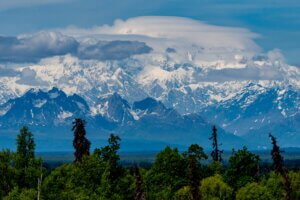Mountains, from the towering heights of the Himalayas to the expansive ranges of the Andes, have long captivated the human spirit. These magnificent landforms carry more than just their awe-inspiring visages. They bear names steeped in rich mythologies and metaphors. Everest and Kilimanjaro, undoubtedly familiar to many, possess characters that resonate with intriguing tales. Yet, how many truly know the stories behind these mountain names? The origins and meanings of these monikers provide a deeper connection to the landscapes that have inspired countless tales of exploration and reverence.
Decoding the Peaks: Stories and Origins Behind the World’s Tallest Mountains
The Seven Summits represent the pinnacle of mountaineering, encompassing the highest peaks on each continent. Remarkably, in 1985, mountaineer Richard Bass achieved the feat of scaling all these summits within a mere year at 55.
| Name | Location | Height | Meaning of Name |
| Mount Everest | Nepal/ China, Asia | 29,029ft (8,848m) | After Sir George Everest, a former surveyor of India, Nepali name (Sagarmatha): “Forehead of the Sky” Tibetan name (Chomolungma): “Goddess Mother of Mountain” |
| Aconcagua | Argentina, S. America | 22,841ft (6,962m) | Various native words: “Comes from the other side”, “Sentinel of stone”, “White sentinel”, “white ravine” |
| Denali | Alaska, U.S., N. America | 20,310ft (6,190m) | Native Koyukon Athabascan: ”high” or ”tall” |
| Mount Kilimanjaro | Tanzania, Africa | 19,341ft (5,895m) | Unclear, but some suggest it is a combination of Swahili ”Kilma” (“mountain”) and KiChagga ”Njaro” (“whiteness”) |
| Mount Elbrus | Russia, Europe | 18,510ft (5,642m) | Derived from Iranian mythology for the legendary mountain ”Avestan Hara Berezaiti”: “high watchtower” |
| Vinson Massif | Antarctica | 16,050ft (4,892m) | After Carl G. Vinson, a congressman from Georgia who supported the Antarctic Exploration |
| Puncak Jaya | Indonesia, Asia/ Oceania | 16,024ft (4,884m) | Sanskrit: “Victorious mountain” |
Of these majestic peaks, Mount Kilimanjaro in Tanzania and Mount Elbrus in Russia stand apart. This is because they are, in essence, volcanoes. Delving into the etymology of these mountains, it becomes evident that most vocabulary is deeply rooted in the indigenous languages of their respective regions. This reflects a profound bond between the local culture and the landscape.
Himalayan Heights: The Linguistic and Mythical Tales of Asia’s Lofty Peaks
Asia boasts the world’s highest mountains, with the Himalayan range alone home to nine of the top ten. These mountain names often find their roots in the Sino-Tibetan languages. Furthermore, mythological and religious nuances shape some of their vocabularies.
| Name | Location | Height | Meaning of Name |
| Mount Everest | Nepal/ China | 29,029ft (8,848m) | After Sir George Everest, former surveyor of India Nepali name (Sagarmatha): “Forehead of the Sky” Tibetan name (Chomolungma): “Goddess Mother of Mountain” |
| K2 | Pakistan | 28,251ft (8,611m) | First surveyor labeled each mountain with a K and number. It has no local name due to its remoteness |
| Kangchenjunga | Nepal/ India | 28,169ft (8,586m) | Lhopo: “Five treasures of the high snow” |
| Lhotse | Nepal/ China | 27,940ft (8,516m) | Tibetan: “South peak” |
| Makalu | Nepal/ China | 27,838ft (8,485m) | Sanskrit origin: “Big Black”, the name for the Hindu god Shiva |
| Cho Oyu | Nepal | 26,864ft (8,188m) | Tibetan: “Turquoise goddess” |
| Dhaulagiri | Nepal | 26,795ft (8,167m) | Sanskrit origin: ”Dazzling, beautiful, white mountain” |
| Manaslu | Nepal | 26,781ft (8,163m) | Tibetan: ”Mountain of the spirit” Sanskrit origin (Manasa): ”intellect” or ”soul” |
| Nanga Parbat | Pakistan | 26,660ft (8,126m) | Sanskrit origin: “Naked mountain” |
| Annapurna | Nepal | 26,545ft (8,091m) | Sanskrit origin: “Everlasting food” Name of the Hindu goddess of food and nourishment, believed to reside in the mountain |
Interestingly, K2, standing as the second-highest mountain and situated in Pakistan, deviates from its ornate naming. Its more austere title can be attributed to its secluded location, rendering it invisible to residents.
North America’s Peaks: Indigenous Names and Enduring Myths
North America’s diverse topography spans three countries, encompassing five volcanoes, four notable mountains, and a significant massif. Among these, Alaska’s Denali stands out, reflecting its rich indigenous heritage with unique designations in nearly seven native languages.
| Name | Location | Height | Meaning of Name |
| Denali | Alaska, U.S. | 20,310 ft (6,190 m) | Native Koyukon Athabascan: ”high” or ”tall” |
| Mount Logan | Canada | 19,551 ft (5,959 m) | After Sir William Edmond Logan (Founder of Geological Survey of Canada) |
| Pico de Orizaba | Mexico | 18,491 ft (5,636 m) | Nahuatl: “Star mountain” |
| Mount Saint Elias | Alaska, US. | 18,009 ft (5,489 m) | After Cape Saint Elias Tlingit: “Mountain behind icy bay” |
| Popocatépetl | Mexico | 17,749 ft (5,410 m) | Nahuatl: “Smoking Mountain” |
| Mount Foraker | Alaska, US. | 17,400 ft (5,304 m) | After an Ohio Senator, Joseph B. Foraker |
| Mount Lucania | Canada | 17,257 ft (5,260 m) | Named by the Duke of Abruzzi for the RMS Lucania (A ship he sailed from Liverpool to New York) |
| Iztaccíhuatl | Mexico | 17,159 ft (5,230 m) | Nahuatl: “White woman” |
| King Peak | Canada | 16,972 ft (5,173 m) | After Canadian surveyor and politician William King |
| Mount Bona | Alaska, US. | 16,550 ft (5,044 m) | Named by the Duke of Abruzzi after his racing yacht |
Meanwhile, in Mexico, the land’s highest volcanoes, Popocatépetl and Iztaccíhuatl, are enshrined in poignant lore. This tale draws parallels to the tragic romance of Romeo and Juliet, with the two volcanoes cast as ill-fated lovers. Legend has it that the still-active Popocatépetl mourns and seeks retribution for the demise of its dormant counterpart, Iztaccíhuatl.
Top 10 Captivating Names of Mountains
| Name | Fictional Meaning of Name |
| Cloudripper | A peak reaching through and “ripping” clouds |
| Mt Challenger | Named for its challenging terrains and routes |
| Mt Fury | Named for the fierce weather conditions experienced at its summit |
| Mt Terror | Named for intimidating cliffs and dangerous routes |
| The Chopping Block | Conceived as being flat-topped and perilously sharp-edged |
| Mt Triumph | A mountain resembling a bent thumb, visually peculiar and distinct |
| Inspiration Peak | A peak that provides awe-inspiring views from its summit |
| Crooked Thumb | A mountain reaching a bent thumb, visually weird and distinct |
| The Rake | A peak reaching through and ”ripping” clouds |
| Bandersnatch | Named for its slopes, reminiscent of a rake’s tilted angle |
Ten Mountains with Distinctive Names
There is a particular disappointment that arises when a majestic mountain possesses an uninspiring name. Conversely, a mighty mountain name corresponding to its grand stature offers a deep satisfaction. The connection between the size and the terms of the world’s most magnificent mountains has long been a subject of intrigue. This has led to the identification of a top-10 ranking dedicated to the most renowned and influential mountain names. While there are numerous lesser-known peaks with remarkable names, this particular enumeration focuses strictly on those with the most famously compelling monikers.
1. El Capitan: The Stoic Sentinel of Yosemite
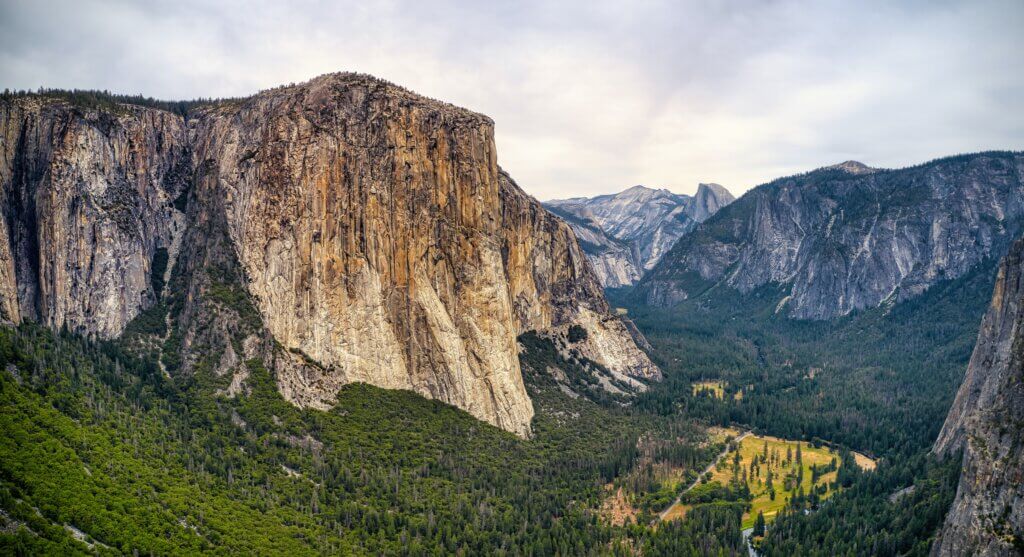
Every year, approximately 5 million visitors flock to Yosemite National Park. Nearly all are captivated by the striking granite facade of El Capitan. This remarkable formation stands as a testament to rock-climbing legends. It is also a visual cornerstone of the iconic American National Park System. Consequently, it’s no wonder that El Capitan ranks among the most photographed and admired mountains worldwide.
Historically, the sheer cliffs of El Capitan were deemed unscalable by many. However, this perception shifted in 1958 with the pioneering ascent of its 3,000-foot south buttress. This groundbreaking feat paved the way for a surge in rock climbing endeavours on the mountain’s southern faces.
El Capitan frequently graces newspaper headlines for various climbing achievements. Notable instances included Jack Osbourne’s successful summit bid in 2005 and Alex Honnold’s audacious 2017 free-solo climb without protective gear.
Yet, beyond its breathtaking allure and daunting challenges, the name “El Capitan” resonates deeply with many. The mountain’s name also holds significant historical weight. ”El Capitan” is derived from the Miwok term ”Too-Tock-Awn-oo-Lah”, translating to ”The Chief”. It’s easy to envision the mountain as a vigilant guardian overseeing Yosemite Valley, underscoring the aptness of its title for this cherished granite giant.
2. Matterhorn: Alpine Majesty and Peril
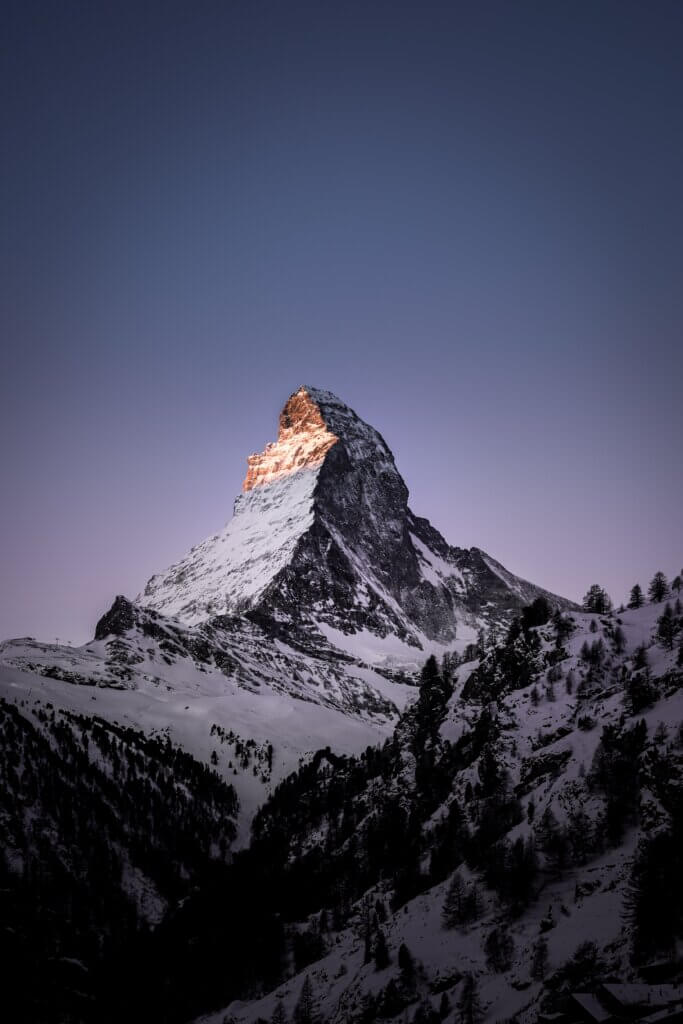
Before the Western world became acquainted with Everest, the Matterhorn was perhaps the globe’s most celebrated mountain. The distinctive claw-like profile of the Matterhorn is instantly recognisable, with its reflection in Lake Stellisee amplifying its breathtaking beauty. Although it’s not the loftiest peak in the Alps—that honour goes to neighbouring Weisshorn, situated just nine miles away—the Matterhorn’s rugged visage sets it apart amidst a panorama of stunning alpine summits.
Mountaineering enthusiasts are no strangers to the challenges this mountain presents. Indeed, the Matterhorn was the last significant peak in the Alps to witness a successful ascent. It was a feat accomplished in 1865 by a group led by Edward Whymper. This achievement, however, was marred by tragedy, as four members tragically lost their lives during the descent.
The mountain’s perilous nature hasn’t deterred climbers. For many alpinists, reaching the Matterhorn’s pinnacle is a coveted achievement, even as they acknowledge the inherent risks. This was exemplified by Kilian Jornet’s 2013 speed ascent, completing the climb in under two hours from Breuil-Cervinia, a record time for that route. Yet, the dangers are real. Every year sees approximately twelve fatalities on the mountain, leading to a grim tally exceeding 500 over the years.
As for the name, “Matterhorn” exudes a sense of menace befitting such a formidable peak, yet it also carries an air of respect. One thing remains clear: conquering the Matterhorn is a challenge far surpassing any artificial thrill.
3. Denali: North America’s Towering Challenge
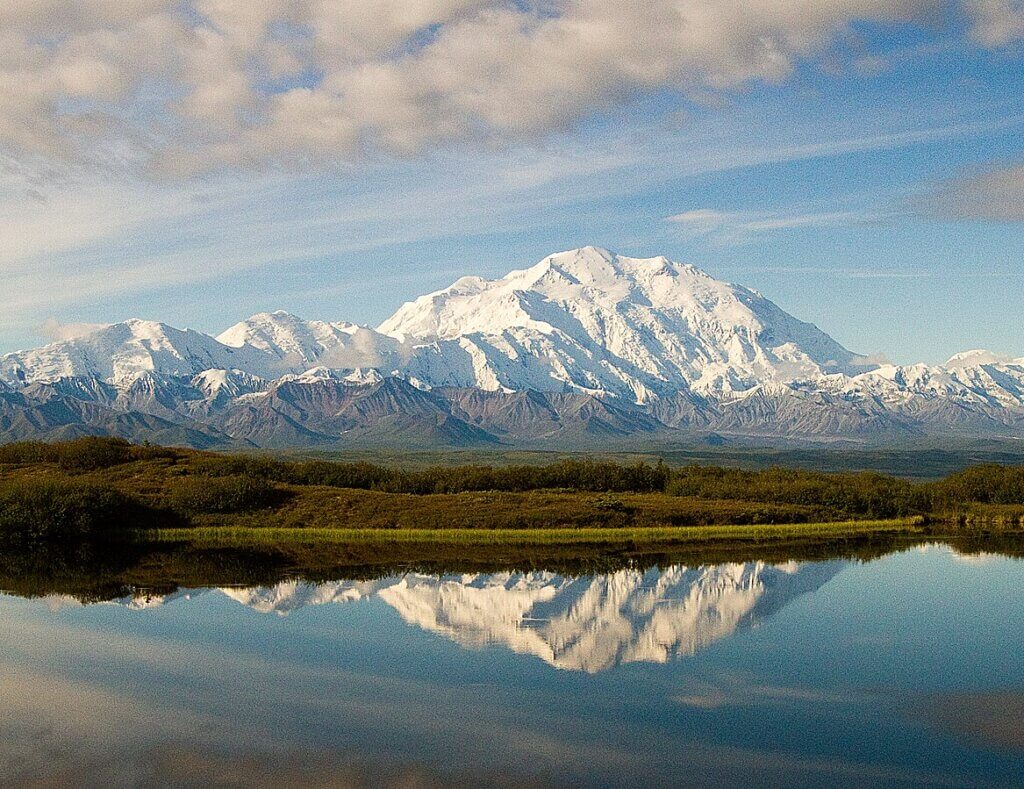
Standing as the sole North American peak exceeding 20,000 feet in elevation, Denali proudly claims its place among the esteemed Seven Summits. Situated just south of the Arctic Circle, this towering mountain is infamous for its ferocious winter storms. These can also manifest even during the summer months.
Such unpredictable weather often stalls eager alpinists in their tracks, forcing them to bide their time within the confines of their resilient tents. While many describe the ascent as a mere “walk-up”, the explosive nature of Denali’s climate transforms it into a formidable adversary, even for the most seasoned climbers.
Regrettably, Denali’s harsh environment means that approximately half climbers retreat without reaching the pinnacle. Whether due to the volatile weather or the crippling effects of altitude sickness, many are denied the summit. Tragically, this unforgiving mountain has claimed the lives of over 100 adventurers throughout its recorded climbing history.
Revered by Alaska’s Native Americans, the Athabaskan name “Denali” translates to “the tall one”. The title not only captures the mountain’s stature but also resonates with a sense of power and grace. Further embedding its robust image, General Motors has christened a powerful SUV with the same name, reinforcing its significance in modern culture.
4. Krakatoa: Echoes of Earth’s Loudest Roar
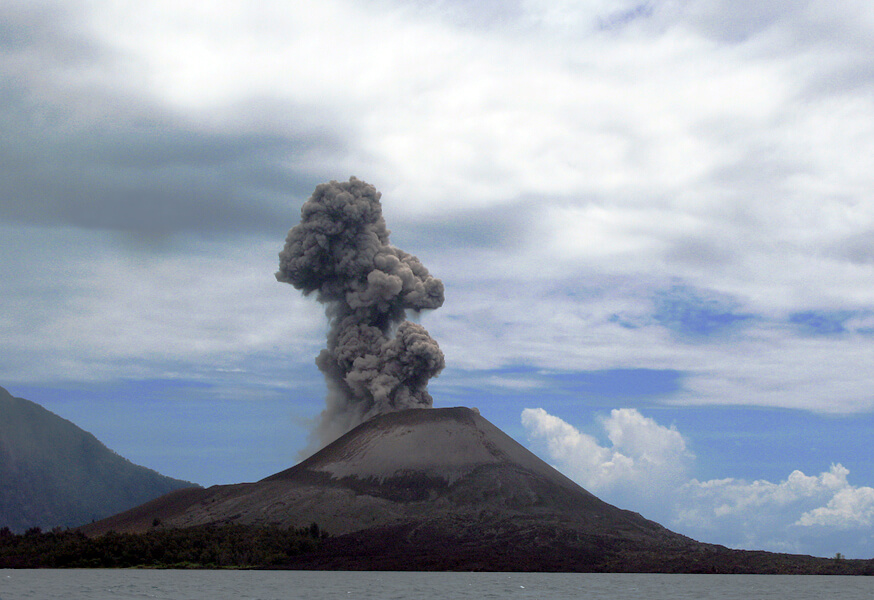
The formidable sound reminiscent of a cracking explosion is captured perfectly in “Krakatoa”. This Indonesian volcano, known for its destructive capabilities, made its mark in 1883 when it erupted with such force that the resulting blast could be discerned as far away as Perth, Australia. This eruption produced a noise of an astounding 180 decibels. This was measured nearly 100 miles away in Jakarta, a feat that earned it the distinction of the loudest sound in recorded human history.
This catastrophic event gave rise to tsunamis, multiple explosions, and pyroclastic surges. Over 36,000 people tragically lost their lives at the end of it, with the towering tsunamis that battered Sumatra’s coast taking many of them.
A sequence of magnificent eruptions punctuates Krakatoa’s history. Long before the 1883 event, around AD 416, an even more massive version of Krakatoa experienced a monumental blast. This explosion was so intense that it reconfigured the mountain, transforming it into a five-mile caldera. The violent tendencies of Krakatoa didn’t end there. Following the 1883 eruption, which led to 30% of the mountain sinking into the ocean, subsequent eruptions over the decades constructed a new island, Anak Krakatoa or “Child of Krakatoa”. However, in a twist mirroring its lineage, a significant portion of Anak Krakatoa plunged into the sea after a powerful eruption in December 2018.
With a history steeped in explosive change and consistent destruction, “Krakatoa” seems a fitting tribute to the mountain’s nature. Although its exact etymological origins remain a mystery, with only faint traces hinting at its roots, the name evokes the essence of a colossal volcanic eruption. Krakatoa, with its dramatic onomatopoeic quality, stands as a testament to the mountain’s volatile legacy.
5. Kilimanjaro: Africa’s Gentle Yet Deadly Giant

Mount Kilimanjaro, rising a majestic 16,000 feet above the African savannah, is the continent’s tallest peak. This dormant stratovolcano, considerably older than its counterparts, has remained silent without a significant eruption for 350,000 years, earning its reputation as a gentle giant. However, the chance of a devastating explosion remains notably low.
Esteemed as one of the Seven Summits, representing the pinnacle of each continent, Kilimanjaro attracts climbers from around the globe. Remarkably, each year sees around 25,000 individuals ascend its trails, a number starkly contrasting with the approximately 4,000 who have ever reached the peak of Mount Everest.
The mountain reaches over 19,000 feet, standing nearly a mile above Colorado’s loftiest peaks. This elevation is often underestimated by climbers, leading a significant number—roughly one-third—to abandon their ascent. This is primarily due to the debilitating effects of altitude sickness.
Deaths on Kilimanjaro are not uncommon, with half attributed to severe high-altitude illnesses, notably HAPE or HACE. Each year, these conditions claim an average of two lives on its slopes—a startling figure given the mountain’s reputation for being a comparatively “gentler” climb, especially when juxtaposed with the formidable peaks of the Himalayas.
The name Kilimanjaro itself evokes intrigue. While its exact African etymology remains somewhat elusive, the name intriguingly resonates with the phrase “kill a man” in its initial syllables. To those attuned to the English language, the name Kilimanjaro carries an implicit warning, embodying its allure and latent danger.
6. Vesuvius: Beauty and Fury in a Name
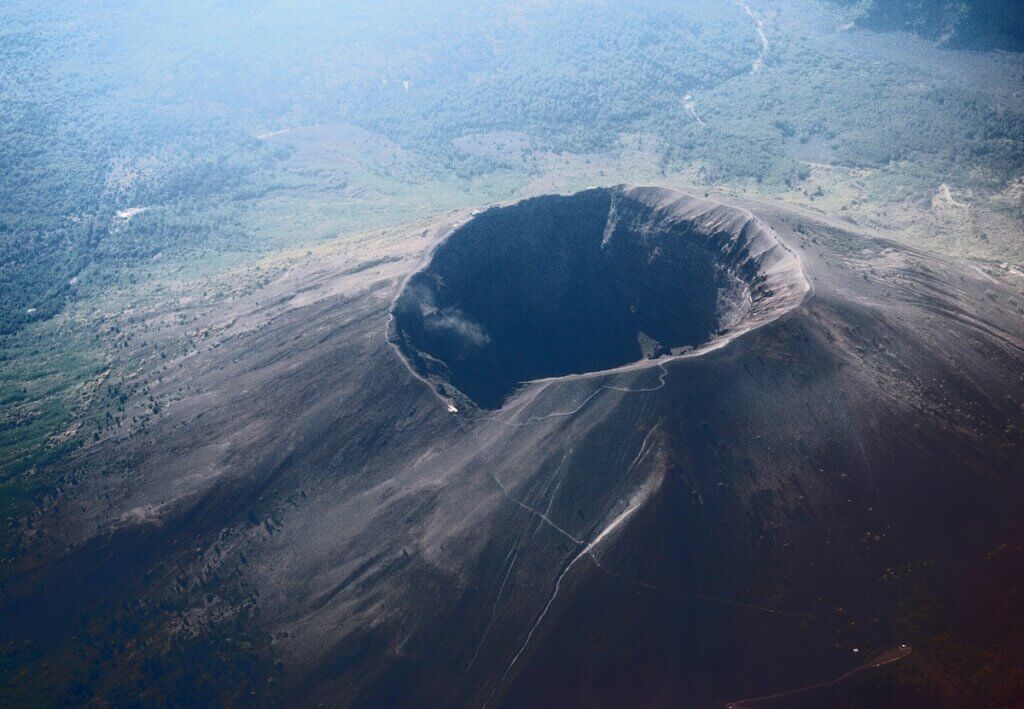
Mount Vesuvius is an emblem of nature’s power and is notorious for its destructive history. Located near the Roman cities of Pompeii and Herculaneum, its catastrophic eruption in AD 79 caused devastation on a grand scale. Pyroclastic flows descended the mountain, torching villages with temperatures beyond 500 degrees Fahrenheit. It also entombed Pompeii under nine feet of volcanic ash.
Such a monumental event gave rise to the term “Plinian eruption”. This denotes an explosive volcanic outburst that sends ash columns as high as 50,000 feet into the stratosphere. The name pays homage to Pliny the Younger. He was a Roman writer who documented the AD 79 eruption in a detailed letter to the historian Tacitus.
Though the AD 79 event remains renowned, Vesuvius hasn’t been dormant. Notable eruptions in 1906 resulted in over 100 fatalities, while the 1944 eruption spewed lava that razed multiple villages. Presently quiescent, one should not underestimate the colossal volcano’s potential for future outbreaks. The nearby city of Naples is home to around 3 million individuals, and an eruption of Vesuvius would spell disaster for its inhabitants. Alarmingly, the “red zone”, an area at highest risk from pyroclastic surges, hosts 600,000 residents who would need to evacuate posthaste should an eruption be anticipated.
The name “Vesuvius”, while resonating with beauty, has understandably taken on a more menacing significance due to the mountain’s turbulent past. The origins of this name are enigmatic, with theories suggesting Greek, Oscan, and Latin roots. Translations vary from “smoke” and “hearth” to grander interpretations like “Son of Zeus” or “hurling violence”. Each arrangement, however, aptly underscores the awe and respect the mountain commands.
7. Mount St. Helens: From Beauty to Biblical Fury
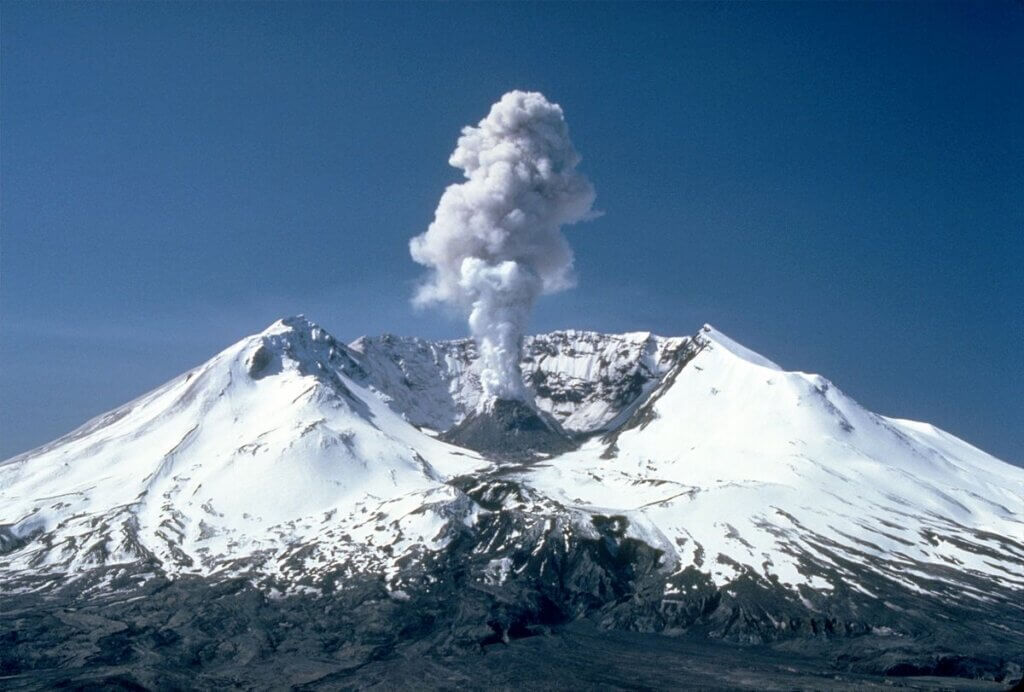
Mount St. Helens, once heralded as the “Fuji-San of America” due to its resemblance to Japan’s Mount Fuji, dramatically transformed in 1980. This once nearly symmetrical stratovolcano witnessed a momentous event that forever altered its picturesque silhouette. A significant landslide on its north slope instigated a pyroclastic explosion of unparalleled magnitude. It turned the formerly symmetrical summit into a U-shaped volcanic crater.
This explosive eruption, the most lethal and devastating in US history, resulted in an explosion equating to 24 Megatons of TNT. It obliterated approximately 230 miles of neighbouring mixed conifer forest. Moreover, it claimed 57 lives and caused property damages amounting to one billion dollars. The eruption’s aftermath further astonished the world as an ash plume surged 80,000 feet into the stratosphere, dispersing volcanic tephra for twelve hours. This ash fallout affected eleven US states, with some areas receiving deposits as thick as five inches.
Beyond its geological significance, Mount St. Helens became emblematic of nature’s wrath. Its name, derived from a British diplomat, did not initially imply foreboding. However, the mountain’s tumultuous history post-1980 aligned it with biblical tales of destruction. Intriguingly, the initial syllables of its name conjure images reminiscent of Old Testament severity, further accentuating the mountain’s formidable reputation. The events of 1980 ensured that the name St. Helens would resonate with both awe and caution, mirroring narratives straight from the book of Revelation.
8. Everest: The Pinnacle of Triumph and Tragedy
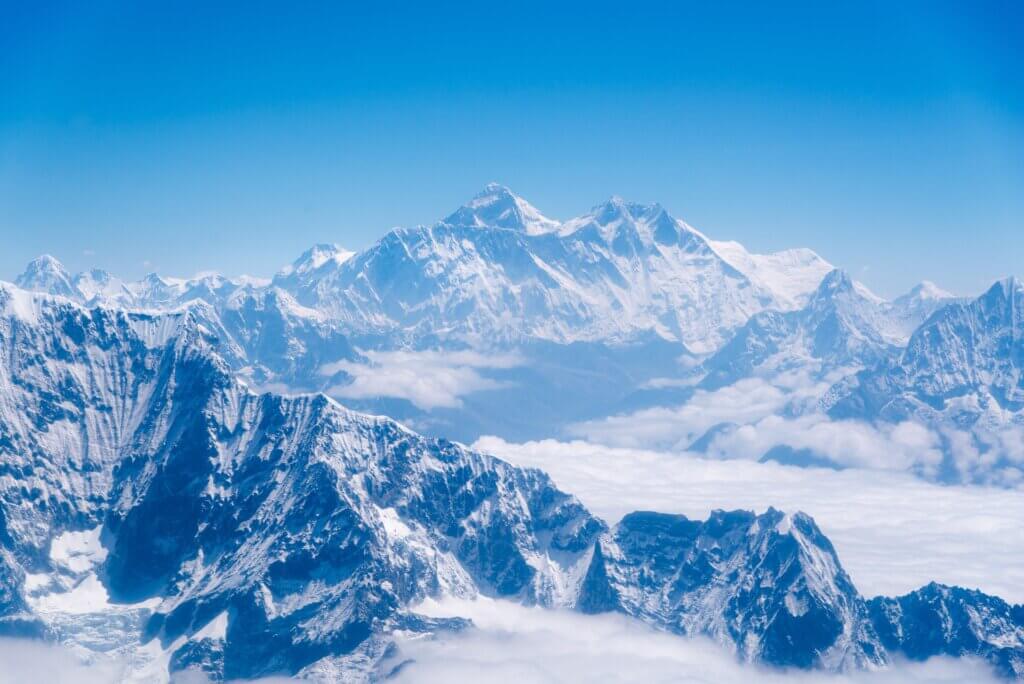
Mount Everest, the world’s highest peak, stands as an epitome of nature’s grandeur and human endurance. Yet, it is no stranger to controversy. From tales of climbers abandoning their comrades to the often debated treatment of Sherpas by mountaineers and their guides, Everest remains a focal point of contention, especially concerning its very name.
Such scrutiny is inevitable for such a prominent landmark. Despite a segment of the mountaineering community criticising its over-commercialisation, Everest’s immense challenge is undeniable. It wasn’t conquered until 1953.
Reaching an impressive 29,029 feet above sea level, the upper echelons of Everest enter the “death zone”. This is a treacherous altitude where oxygen scarcity puts even the best-acclimatised individuals at risk. Here, the insidious grip of hypoxia, an oxygen-deprived state, muddles clear thought and decision-making. The body, battling a relentless cold, sees its metabolism drop drastically, increasing susceptibility to frostbite. Digesting food becomes challenging, energy is scarce, and fatigue is omnipresent, exacerbated by frequent sleep deprivation.
The ascent, mainly via the Southeast Ridge, is fraught with danger. Climbers negotiate treacherous traverses where a misstep could lead to an 8,000-foot drop—more arduous routes on Everest demand even longer preparations and heightened technical skills. With the constant cognitive threats posed by hypoxia, it’s unsurprising that the mountain claims several lives annually.
Everest’s name itself is a topic of debate. Named by the Royal Geographical Society in 1857, the title honours a Welsh surveyor, though its acceptance wasn’t universal. Nonetheless, the drama and allure associated with the peak for over a century have made “Everest” synonymous with immense challenges, tragedies, and victories. While other nations have their indigenous names for the mountain, “Everest” has evolved beyond its origins, symbolising a peak that continually tests those daring to conquer it.
9. The Grandeur of Mount Massive: A Rivalry Set in Stone
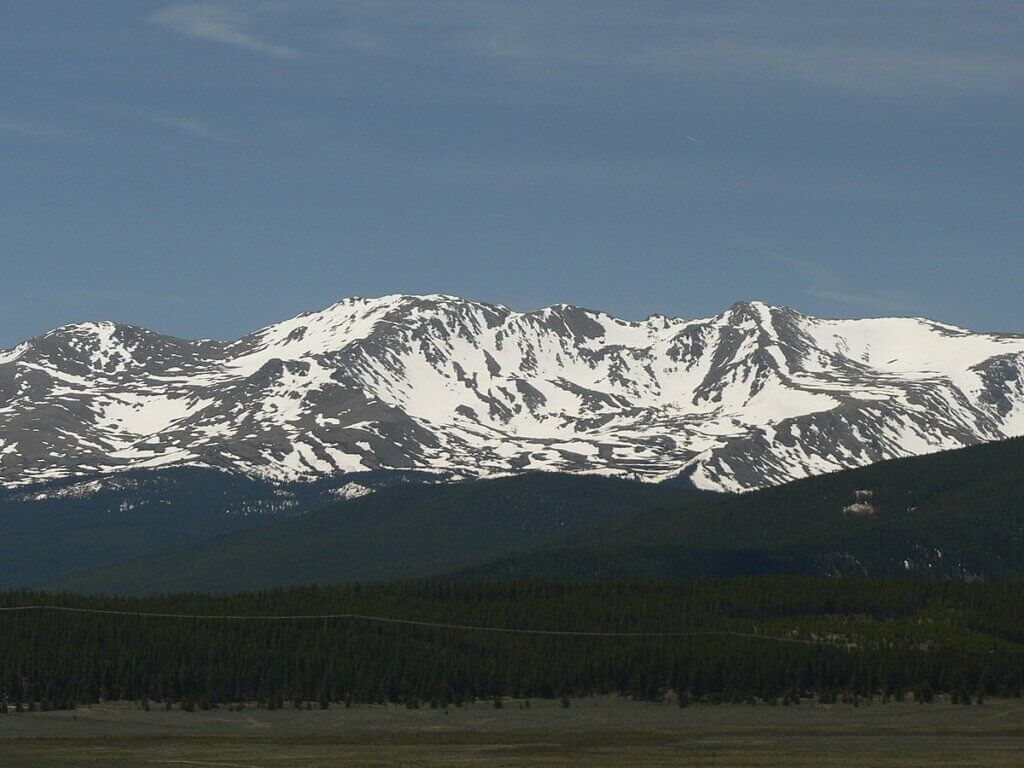
In the heart of Colorado, a state intrinsically linked with mountainous grandeur, Mount Massive stands tall, casting its shadow over the town of Leadville. Though it ranks as the second-highest peak, Mount Elbert surpasses it by a mere few feet.
Mount Elbert, while majestic, has been the subject of debate, especially when compared to Mount Massive. Many mountain enthusiasts argue that Massive’s name encapsulates its imposing presence, while Elbert’s lacks the same awe-inspiring essence.
Actions on the ground further fuel this rivalry between the two mountains. Some supporters of Massive have gone to the extent of piling boulders on its summit, aiming to enhance its elevation beyond that of Elbert. In contrast, Elbert’s advocates climb Massive with the sole intention of dismantling these additions. This longstanding dispute between the two mountains has persisted among Colorado’s mountaineering community for generations.
Residing within the Sawatch Range, Mount Massive boasts its unique stature. It is one of the most expansive massifs among incredibly formidable peaks. Moreover, it also surpasses Mount Rainier, claiming the most land area above 14,000 feet in the Lower 48. Observing Massive from Leadville offers a perspective akin to viewing a well-built bodyguard, with broad shoulders and a solid torso overshadowing its lesser prominent features. Indeed, bestowing upon it any name other than “Massive” would not do justice to its grand presence.
10. K2: The Savage and Solitary Sentinel of the Karakoram
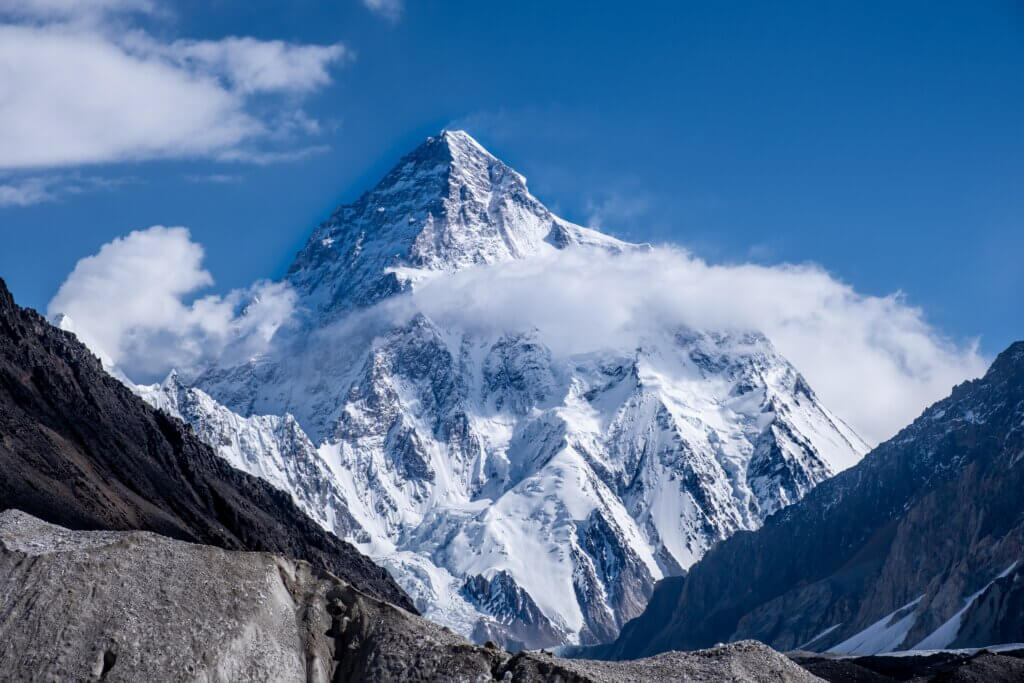
K2, the planet’s second-highest mountain, is known among the mountaineering community as perhaps the most challenging and formidable climb, even when juxtaposed with the famed Everest. It shares many hazardous traits with Everest, such as extreme weather conditions, treacherous cold, vast exposure, and a staggering elevation that ventures deep into the scary death zone. However, K2 distinguishes itself with an increased emphasis on genuine rock and ice climbing.
The ascent to K2’s summit demands skill, endurance, intellect, and sheer will. Remarkably, of the global tally of fourteen peaks exceeding eight thousand metres, K2 is yet to witness a winter ascent. Since its inaugural climb in 1954, 300 individuals have triumphed over its pinnacle.
Delving into the origins of its name, “K2” was a designation bestowed upon this mountain during the mid-1800s by Britain’s Great Trigonometric Survey. Though the survey predominantly favoured indigenous names for peaks, K2’s remote positioning within Pakistan’s Karakoram Range meant it lacked a commonly recognised local name. Consequently, the label “K2” persisted. This became its enduring identity even for the residents of the Karakoram.
For many seasoned mountaineers, the name “K2” encapsulates the essence of the mountain’s nature. Resembling an indifferent predator, the term “K2” aptly mirrors the mountain’s indifferent and cruel character. Devoid of any semblance of empathy, this towering edifice, much like an emotionless entity, lures elite climbers only to prey upon their vulnerabilities. Such is its daunting aura that if one envisages a formidable destructor, the image of K2 might dominate their imagination.

